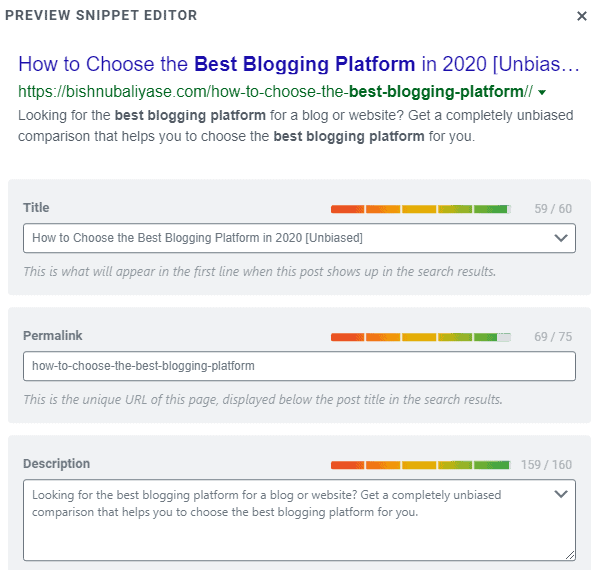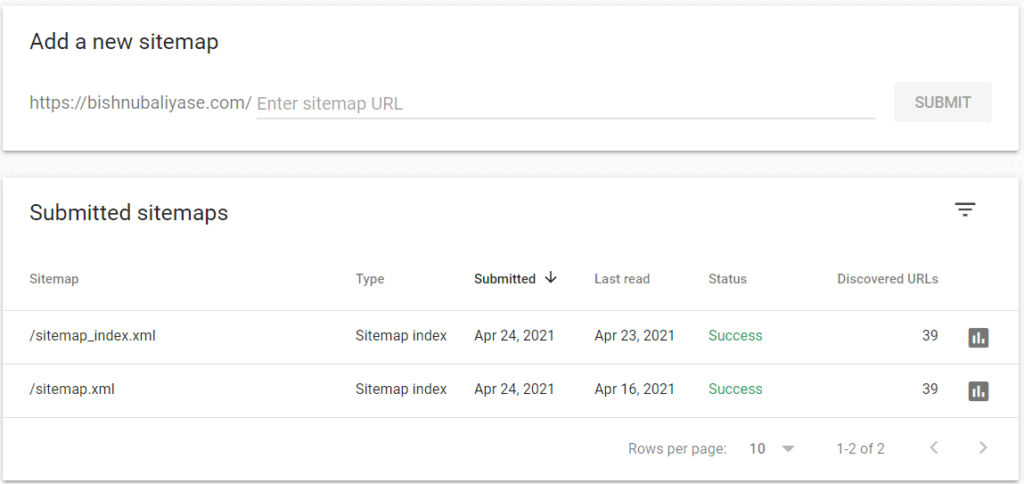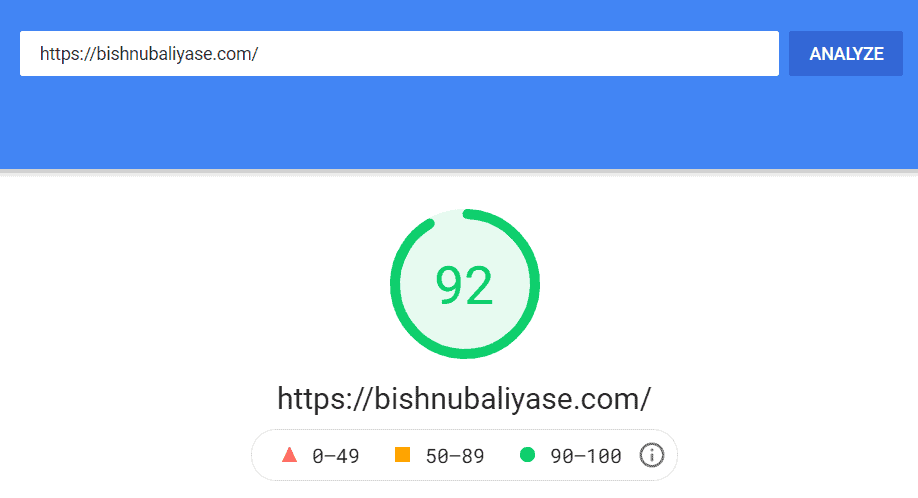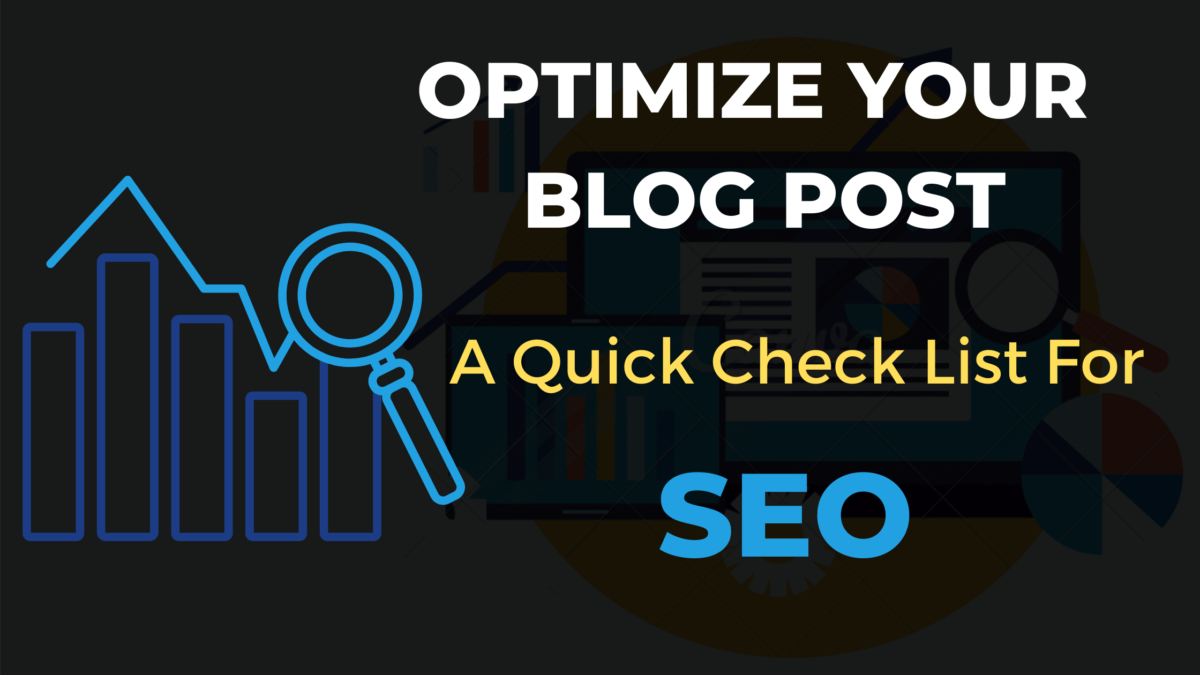Search engine optimization, aka SEO, is incredibly important for bloggers, and there are so many things that you can do to optimize your blog posts for SEO.
However, the best time to optimize your blog content for SEO is when you are creating it, but you can always go back and improve your old posts as well.
In this article, I will share the best blog SEO tips to help you optimize your blog posts for SEO like a pro.
Table of Contents
1. Plan Your Content with Proper Keyword Research
Keyword research is a technique used by content creators and SEO experts. It helps you discover topics your users are interested in based on the search engine data. Keyword research is an important step for SEO of a blog.
Pro content marketers recommend using keyword research tools like SEMRush or Ahrefs. These tools offer in-depth keyword data, competition analysis, keyword position tracking, and tons of other useful features.
After you have done your keyword research and discovered keyword ideas, it is time to pick one that has the highest search volume and low competition.
This will be your focus keyword. It is the search phrase that your users are most likely to look for.
When creating a blog post you should have one main keyword phrase in mind even before writing it. From that one focus keyword phrase, you might have additional secondary keyword phrases. In most cases, you’ll naturally use the secondary keywords when you write the post.
A good rule of thumb is to focus on one or two long-tail keywords per blog post. While you can use more than one keyword in a single post, keep the focus of the post narrow enough to allow you to spend time optimizing for just one or two keywords.
Also Read: How To Do Keyword Research For SEO
2. Write a Catchy Blog Post Title
The title (i.e., headline) of your blog post will be a search engine’s and reader’s first step in determining your content’s relevancy. Google calls this the “title tag” in a search result.
Thus the title of your blog post is significant for search rankings.
You can make your blog post title more SEO friendly by using your focus keyword in the title.
There are several formulas to write effective titles. The one that still works is called emotional marketing value (EMV)
This formula recommends using power words that trigger specific emotional responses in your audience. There are online tools like EMV headline Analyzer, which help you calculate your title’s EMV score.
3. Add a Meta Description to Your Blog Post
The meta description is an HTML meta tag that you can add to any page. Its purpose is to provide a short description of your article for search engines and other crawlers.
Your meta description is meant to give search engines and readers information about your blog post’s content. Meaning, you must use your long-tail term, so Google and your audience are clear on your post’s content. So the description plays an important role in the SEO of a blog post.
A good meta description can explain a lot more about an article. Social media websites like Facebook, Twitter, and LinkedIn also display it when your articles are shared on those platforms.
Keep it under 160 characters. Don’t stuff it with keywords. Write as if you were writing an introductory paragraph for your article.
You can add meta description through your SEO plugin- Yoast or Rank math.

4. Add Images and Media to Your Blog Posts
Search engines often rank engaging content higher in search results. Images and videos are far more engaging than plain text.
However, search engines don’t simply look for images. Rather, they look for images with image alt text. Meaning, to ensure your images benefit the SEO of a blog, you’ll need to ensure you include image alt text.
When adding images, you want to be careful about image copyrights. Often beginners copy images from other sites to use on their site. Instead, you can find free images at Shutterstock, Unsplash, or similar sites that offer royalty-free images. You can also use websites like Canva to create engaging graphics.
Note– You can register to Canva for free and earn Canva Credits to get a premium element for free!
Videos are even more engaging than images. You can convert your blog posts into videos by creating slideshows, vlogs, or experiment with other formats.
However, you should not upload videos directly to your blog posts; instead, upload them on Youtube and embed them on your blog post.
5. Make Your Articles Structured and Readable
A structured and good content hierarchy makes it easy for your visitors to navigate and shows Google the relative importance of every page.
Categories and tags help you sort your content not only for yourself but for the readers and search engines.
Categories are used to divide your content into major topics discussed on your blog. Tags, on the other hand, are the topics discussed in an individual blog post.
The structured article also improves the readability of your post. Readability is an important factor considered by search engines. Articles that are easier to read often rank higher than articles that are not user-friendly.
You can improve readability by using shorter sentences, smaller paragraphs, punctuation, headings, and bulleted lists. I recommend adding white space around text and use images to make your text look easier on your eyes.
You can use Grammarly tools, which allows you to check grammar, punctuation, and spelling on the fly. It also gives suggestions to improve the readability of your articles.
6. Link Internally When Possible
Inbound links to your content help show search engines the validity or relevance of your content. The same goes for linking internally to other pages on your blog.
Internal linking is a great way to develop a contextual relationship between your new and old posts. It also allows you to pass relevant link juice to your older articles.
Making internal linking a habit will ensure that your on-page SEO is good and that your older articles continue to get new links.
7. Make Sure Your Blog is Responsive
Did you know more people use a search engine from their mobile phones than from a computer?
So, how do you make your blog mobile-friendly? By using responsive design, you can use the same website for desktop and mobile users.
As a result, you’ll centralize the SEO power you gain from these links, helping Google more easily recognize your post’s value and rank it accordingly.
8. Optimize For Featured Snippet
Google has been trying to answer user questions as quickly as possible. As part of this effort, they have introduced the featured result or answer box.
Featured snippets are shown before the first position, usually in a box with an image, video, or a table. They stand out in the search results, which helps you to get more clicks.
There are 4 different types of featured snippets that you will come across:
- Paragraph
- List (both numbered and bulleted)
- Table
- Video
According to research conducted by Advanced Web Ranking, Answer boxes secure almost 32.3% CTR. This makes them an essential strategy for the SEO of a blog.
There is no specific set of instructions provided by Google regarding how they would pick the featured snippet. Their recommendation is to improve your content and make sure that it offers the information users are seeking.
9. Use Google’s Search Console
Submitting a sitemap helps Google understand your blog’s structure, and it also helps Google crawl all your pages.
Google will eventually find any site that’s linked to other sites across the web. But submitting a sitemap can help to rank your site faster.

Google’s free Search Console contains a section called the Search Analytics Report. This report helps you analyze clicks from Google Search — it’s useful to determine which keywords people are using to find your blog content.
10. Improve Your Site’s Load Speed
Page load speed is a ranking factor, which means that if you want to outrank your competition, you’ll need to make your pages load faster.
You can install a caching plugin on your WordPress to improve your page speed. I use and recommend WPRocket, one of the best caching plugin available.
You can use Pingdom, GTmetrix Speed Test, or Google’s PageSpeed Insight tool to test your site’s loading speed. Based on the recommendations, you can optimize your blog speed.

11. Optimize Current Post and Update Old Posts
To improve your SEO, you may assume you need to create new blog content. Although that’s partially true, you should also focus a great deal of your time and energy on your existing blog content.
Many beginners tend to forget about a blog post after they have published it. In fact, you are not done optimizing your blog post for SEO once it is published.
Additionally, updating and repurposing some of your most successful pieces of content extends its lifespan so you can achieve the best results over a longer period of time (especially if it’s evergreen content).
You can check and monitor your search engine result pages with the help of SERP Checker instantly and find more relevant keywords that again boost your post to rank even higher.
I would recommend optimizing old posts regularly so that you can continue to improve your rankings.
FAQs Related To Optimize Your Blog Posts For SEO
1. How to increase website traffic fast?
Follow the step mentioned in this check, that will increase your website traffic. Additionally, off-page SEO and by leveraging Social media you can increase your website traffic even faster.2. What is On-page SEO and Off-page SEO?
On-page SEO is the practice of optimizing individual web pages or blog posts to rank higher and get more relevant traffic through search engines. On-page refers to both the content and HTML source code of a page that can be optimized. This guide helps you to optimize your blog for on-page SEO.
Off-page SEO also called off-site SEO means, the actions taken outside of your website to improve your rankings within search engine results pages (SERPs). Off-page SEO also called off-site SEO means, the actions taken outside of your website to improve your rankings within search engine results pages (SERPs). Guest Posting, Social Media Marketing, and Influencer marketings are few Off-page SEO methods used by bloggers.
3. How do I write an SEO friendly blog?
You can write an SEO friendly post by following the checklist mentioned in this post. 4. How to increase website traffic for free? Most of the methods mentioned in this post are free and you can use them to increase traffic to your website for free. 5. How long should blog posts be for SEO? For SEO, the ideal blog post length should be 2,000-2,500 words, which is good for both, reader and google.Conclusion
I hope you found this basic SEO guide useful. Now it’s over to you to implement these to the best of your abilities.
Keep in mind that implementing these tips won’t take you to the first position overnight. When it comes to SEO, you have to be patient. Just make sure that you record every change you make and measure the performance of your SEO strategy.
Things change a lot in SEO, but as long as you keep up with the basics, you can still get results!
Good Luck! 🙂
Related Articles:


helpful tips! thanks sir!
Thanks!
Glad that you liked the post 🙂